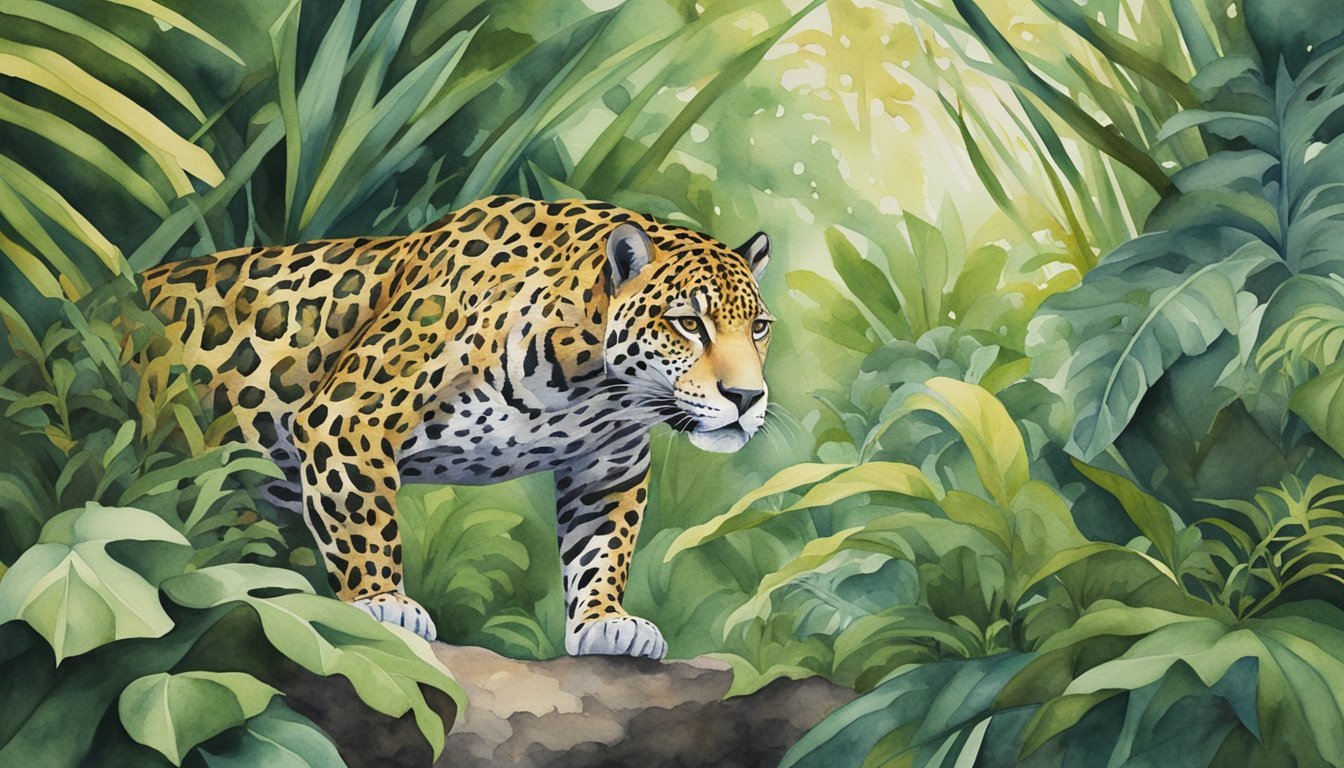Jaguars in North America
The jaguar (Panthera onca) once roamed freely from the southern regions of North America through central and South America. This section explores jaguars’ past and present in North America, shedding light on these elusive big cats.
Historical and Current Range
Historically, jaguars occupied a vast territory extending as far north as the Grand Canyon in the United States. Evidence suggests their range contracted significantly by the 20th century. Today, isolated sightings and evidence of jaguars, primarily male, occur within Arizona and New Mexico, indicating a potential northern range extension from the stable breeding populations in Mexico.
Ecology and Behavior
Jaguars are apex predators vital to the biodiversity of their ecosystems. Inhabitants of forested areas, they require abundant water sources and areas of dense cover for shelter. Male jaguars occupy territories that are roughly twice the size of female territories and will often cross great distances, a behavior crucial for maintaining genetic diversity among breeding populations.
Conservation Efforts
Efforts are in place to facilitate the recovery of jaguars in their historic U.S. habitats. These include securing critical habitats, establishing wildlife corridors, and implementing recovery plans to encourage jaguars to recolonize. Such strategies are also purposed to counteract threats like habitat loss and the implications of human-made barriers such as the U.S.-Mexico border wall.
Human and Jaguar Interactions
Historically, jaguars have been hunted for their beautiful pelts, impacting their population size. Increasingly, organizations like the Wildlife Conservation Society and Cuenca Los Ojos, in collaboration with ranchers and native communities, are working to mitigate human-jaguar conflicts and foster coexistence.
Future Directions and Research
Ongoing research by conservationists helps continuously refine strategies for jaguar conservation. The use of camera traps provides vital data on jaguar movements and behavior, informing policies and conservation efforts aiming at a sustainable future for jaguars in North America.
Species at a Glance
- Scientific Name: Panthera onca
- Status: Ranging from near threatened to endangered, based on location
- Key Features: Tan or orange coat with distinctive black spots, powerful build
- Habitat: Prefers dense forest and areas near water sources
Pan-American Presence
Jaguars are the only big cat species native to the Americas, with a presence ranging from Arizona and New Mexico and down through Mexico to Argentina. Their survival represents the health and connectivity of wildlife habitats across the American continent, from the northern reaches of their range to the southernmost tips.
Jaguars and the Tapestry of Life

Jaguars have long roamed the landscapes of North America, playing critical roles in maintaining healthy ecosystems and embodying significant cultural heritage. Their influence stretches across environmental, social, and legal spheres, shaping the natural and cultural fabric of the regions they inhabit.
Ecosystem Impact
Jaguars stand as apex predators, essential for maintaining the balance in their habitats. Their presence regulates populations of prey species like deer and smaller predators, thus promoting a diverse and healthy ecosystem. The absence of jaguars can lead to overpopulation of certain species, which then impacts vegetation and the stability of the environment they share with other wildlife such as bears and ocelots.
The Cultural Significance
For centuries, jaguars have woven into the mythology and art of Native American tribes, symbolizing strength and agility. They are revered in various cultural narratives and artworks, highlighting the profound connection between these great cats and human societies.
Wildlife Management and the Law
The Endangered Species Act has been instrumental in the protection of jaguars, identifying critical habitats for their survival. The act facilitates the crafting and enforcement of legislation that aims to mitigate threats such as habitat loss, and directs attention to the importance of wildlife corridors for species movement.
Conservation and Coexistence
Efforts by organizations like the Wildlife Conservation Society and the Center for Biological Diversity focus on promoting coexistence between jaguars and humans, particularly ranchers who may view them as threats. Conservation strategies often involve collaborative approaches that include local communities in the stewardship and recovery of jaguar populations.
Research and Monitoring
Scientists and researchers employ modern tools like camera traps to monitor jaguars in the wild, studying their movements and behavior. This research is fundamental in understanding the needs of jaguars for breeding and survival, and informs plans for their conservation and management.
Advocacy and Awareness
Raising awareness is another pillar in jaguar conservation, with advocacy groups working to educate the public and policymakers about the significance of jaguars. Informative campaigns help to dispel misconceptions and foster a sense of stewardship towards these animals and their environments.
The Legacy of Jaguars
Jaguars carry an important legacy in North America’s natural history. They remind us of the rich biodiversity that once thrived and compel us to consider the potential for their restoration. Their story is a poignant example of resilience, motivating continuous efforts in wildlife conservation.

